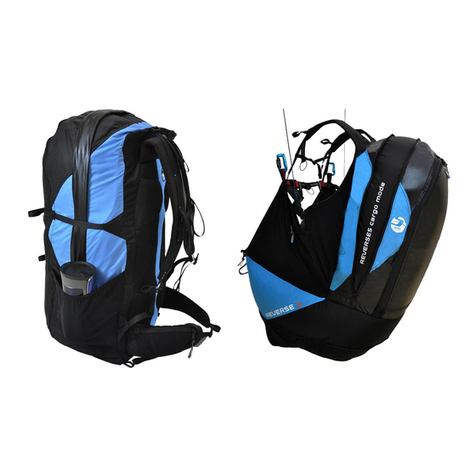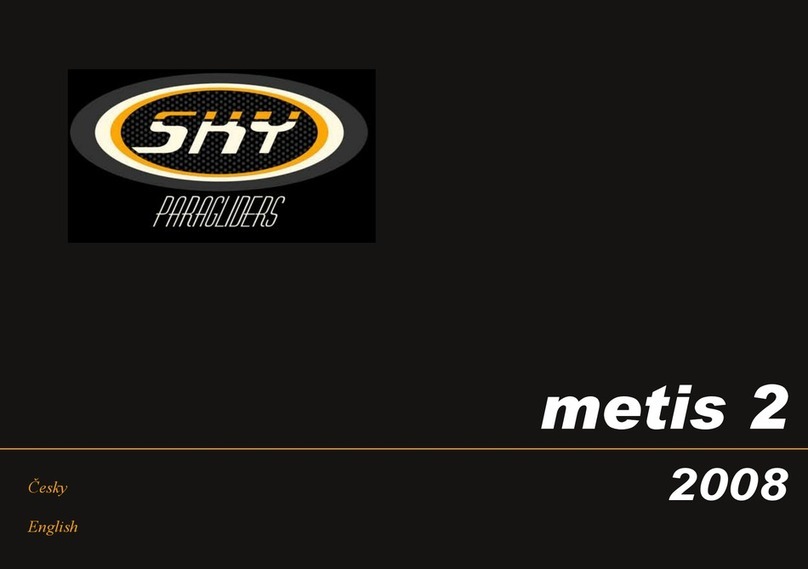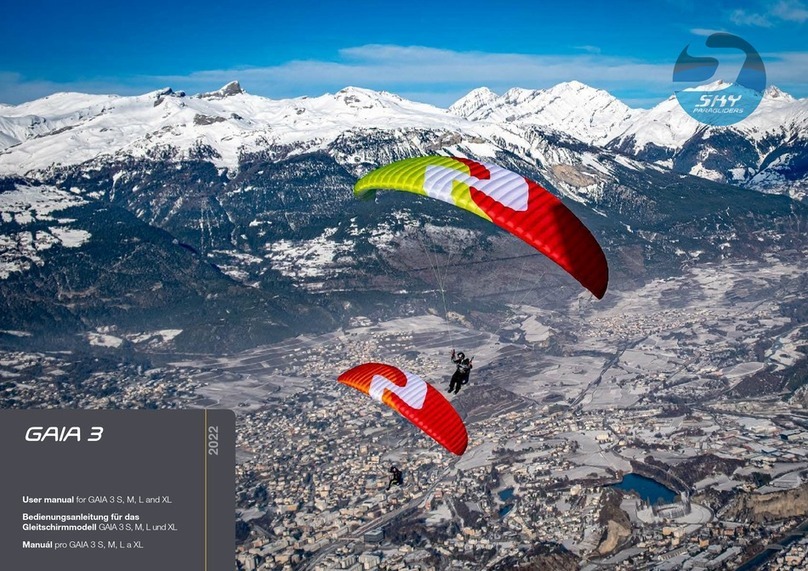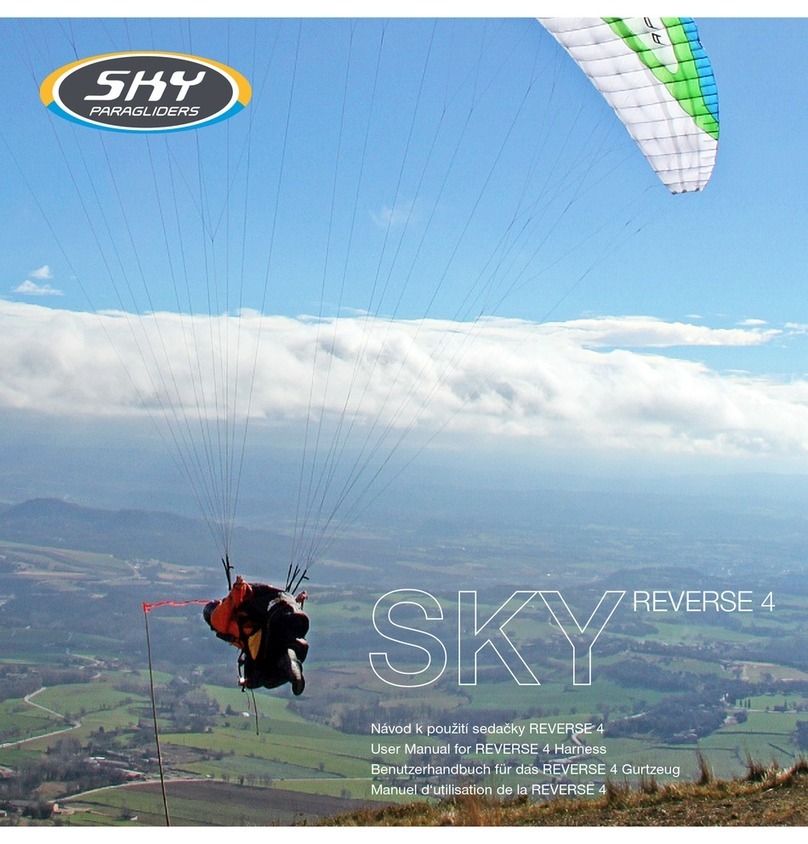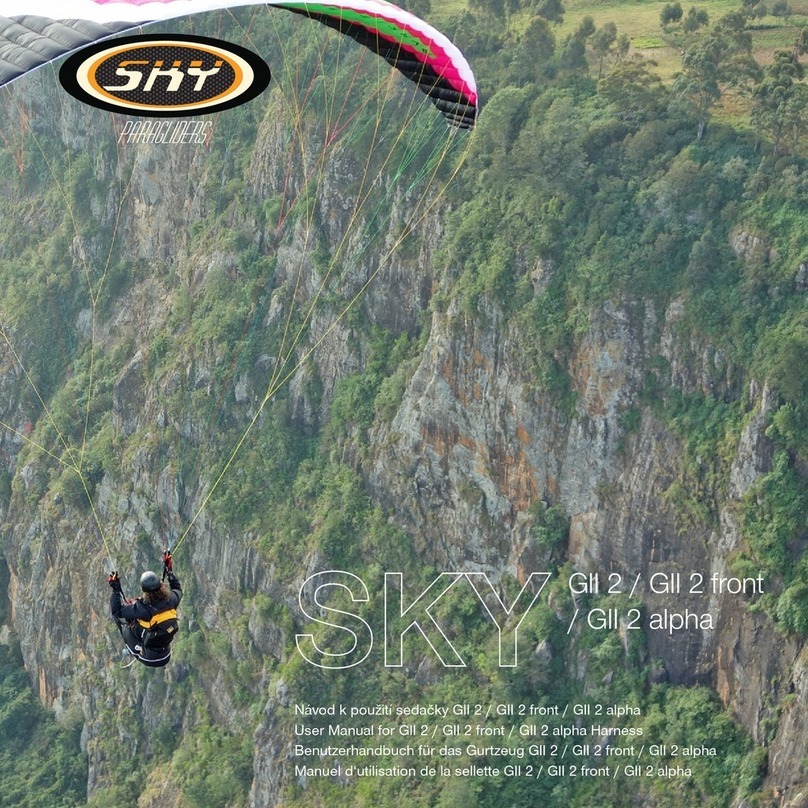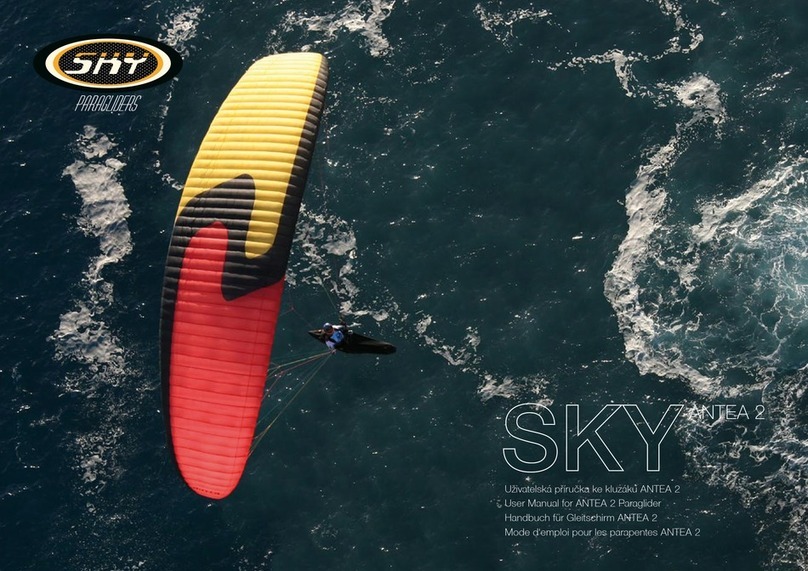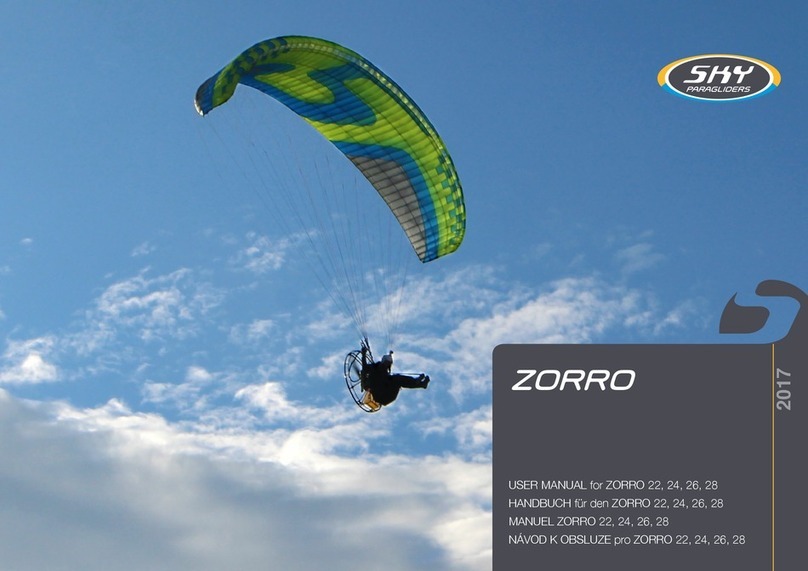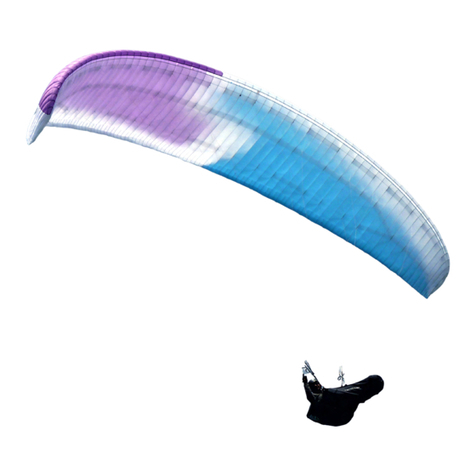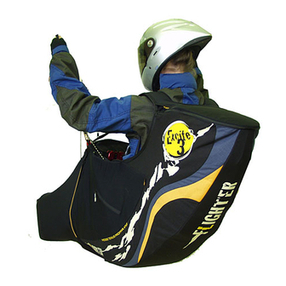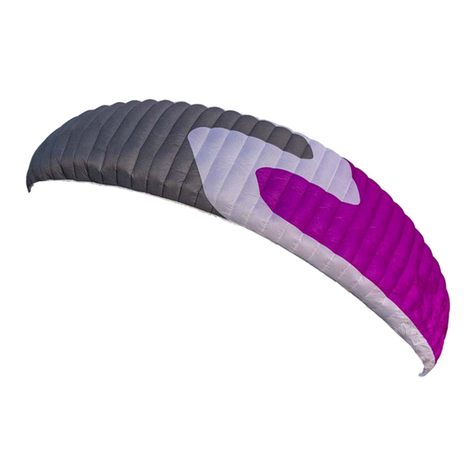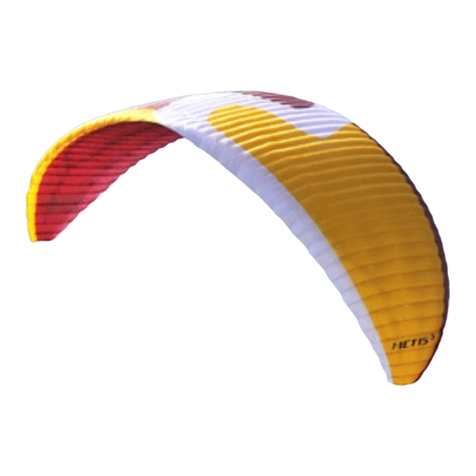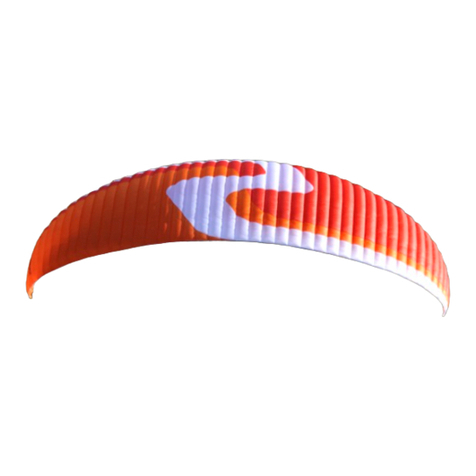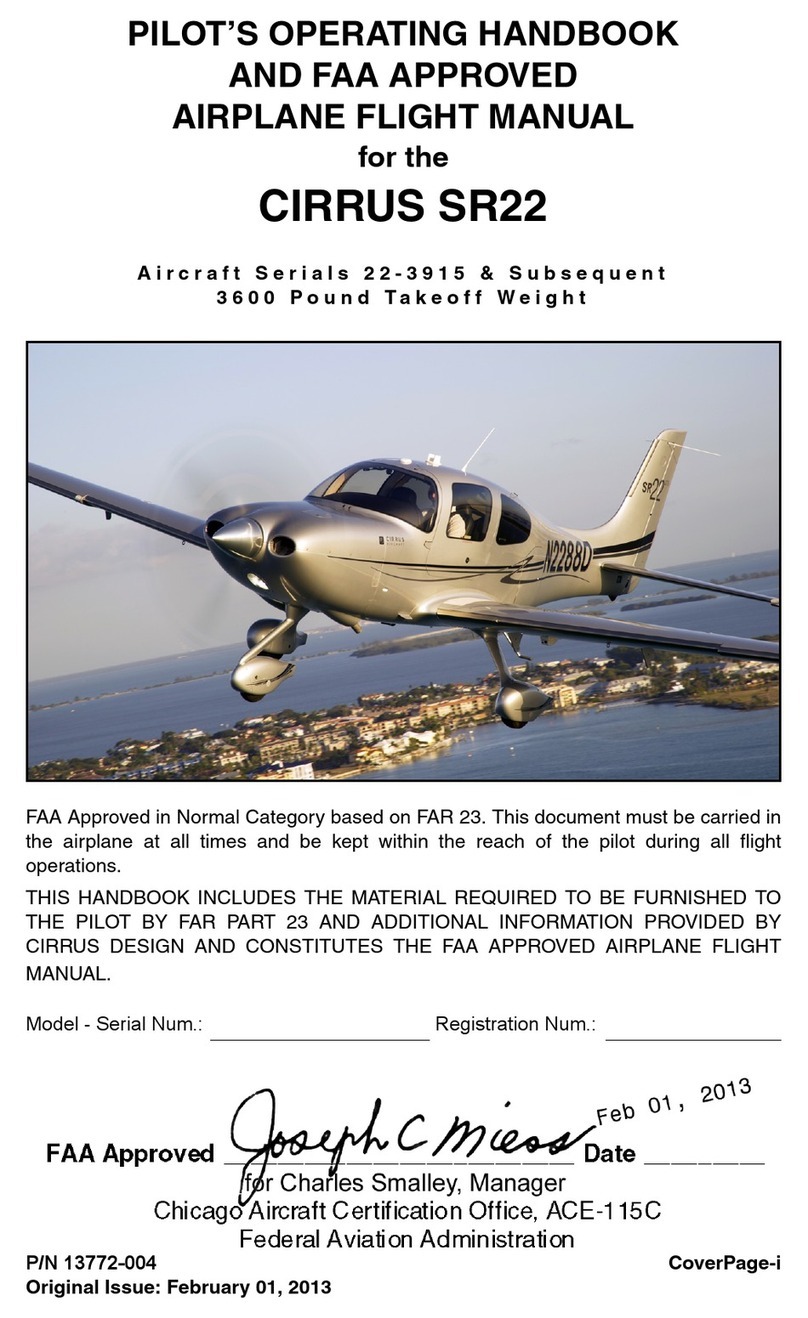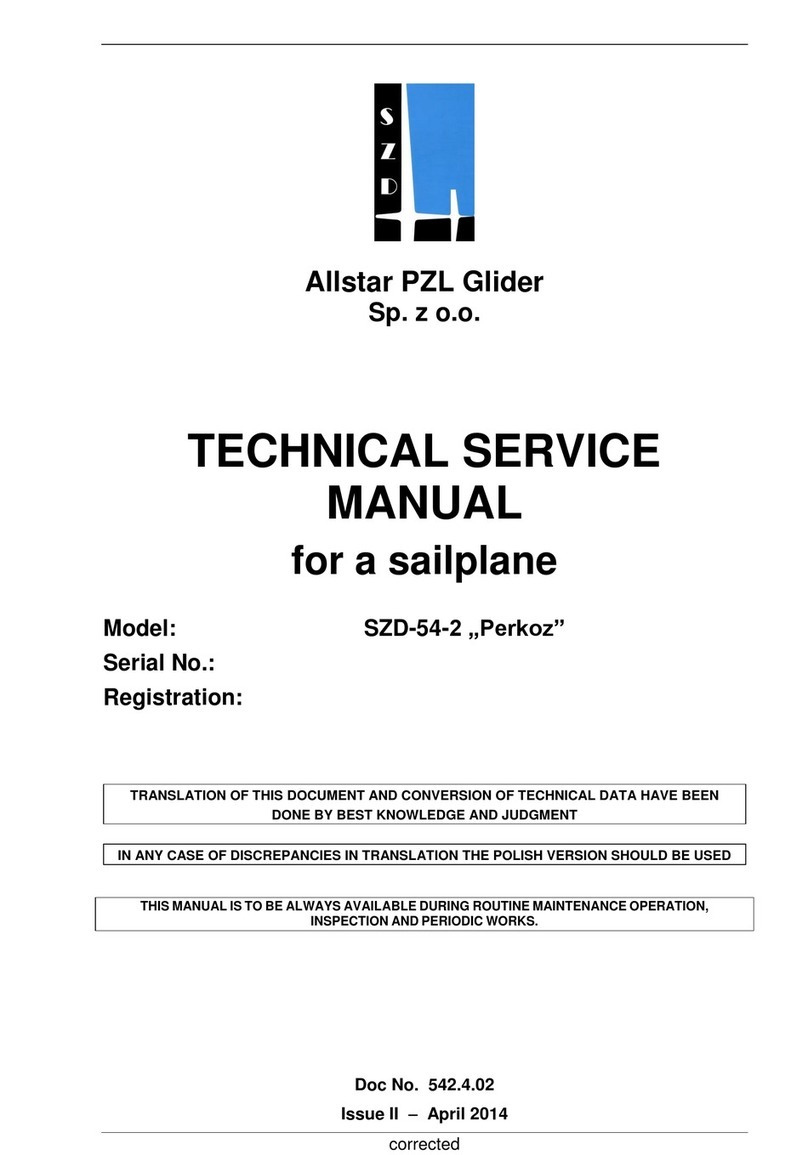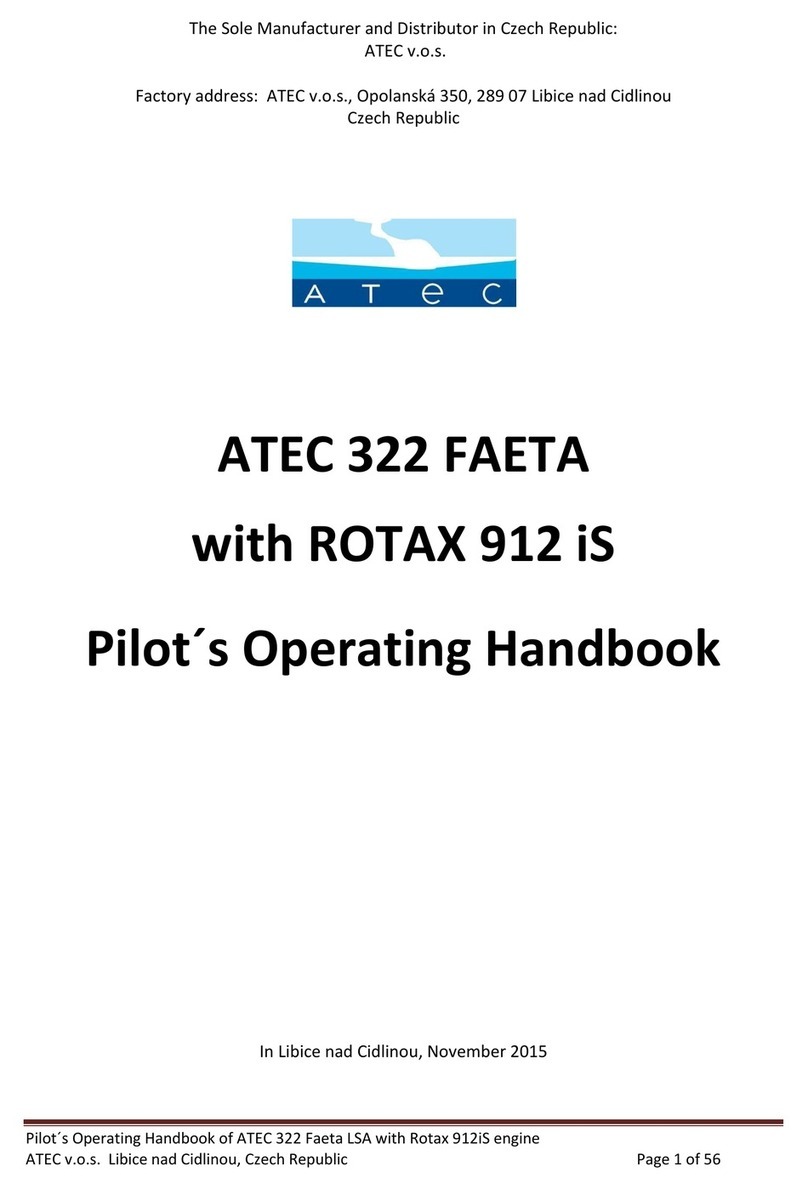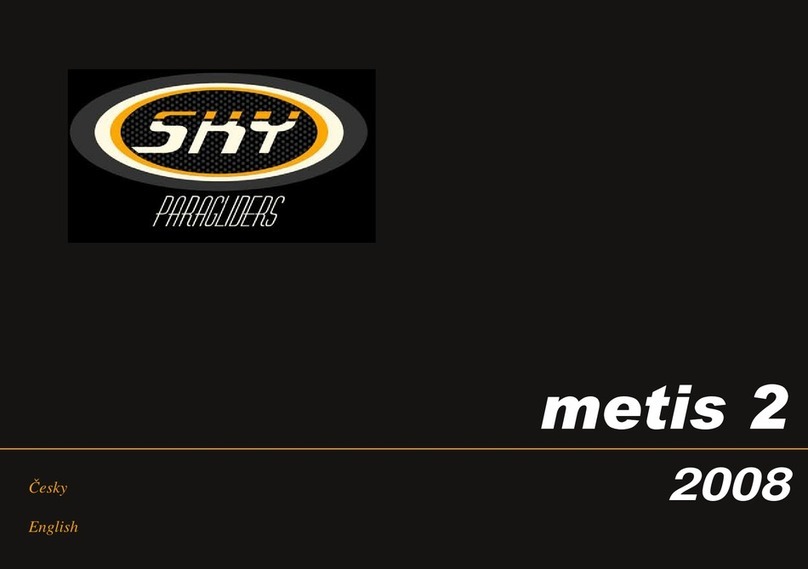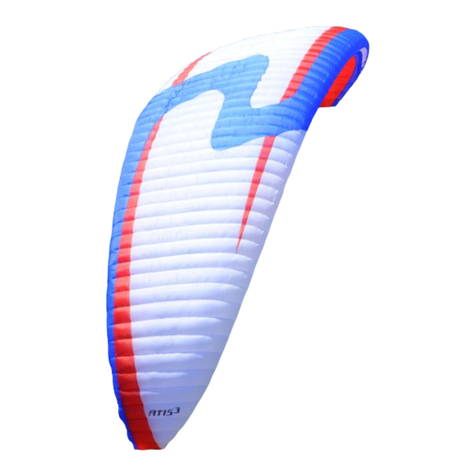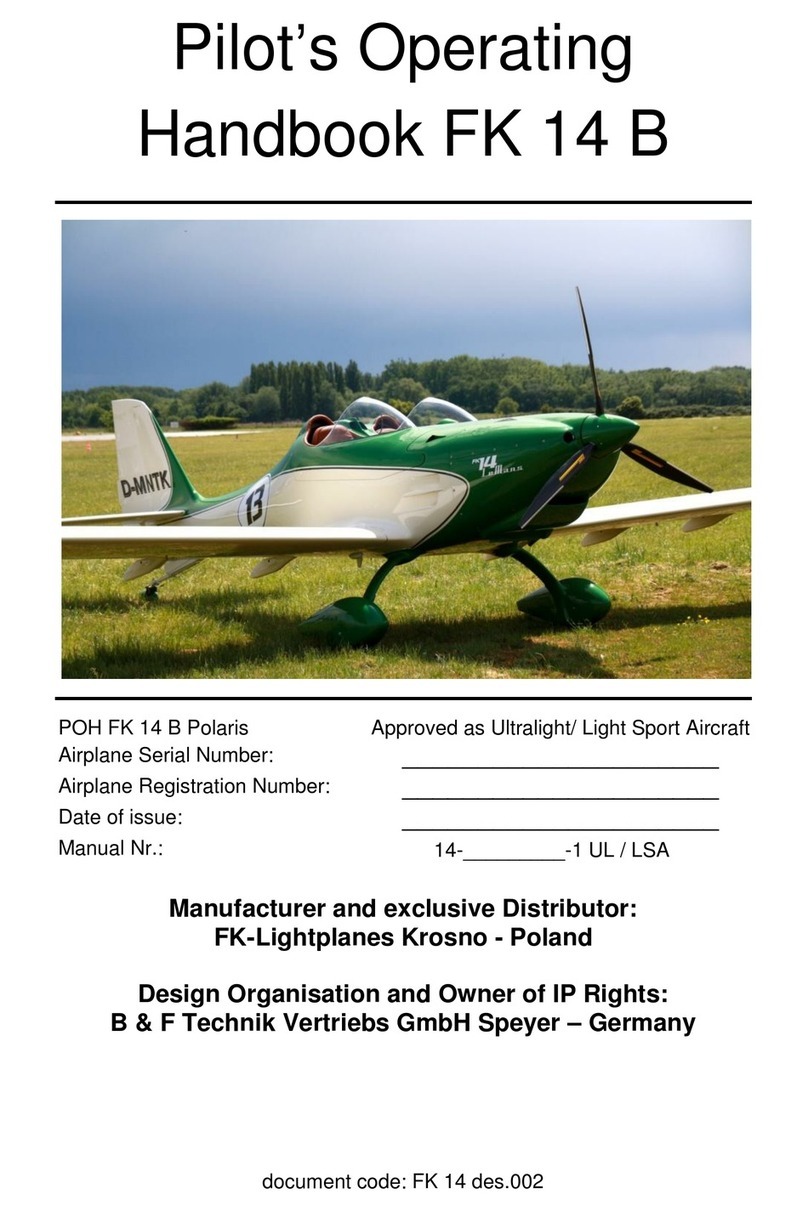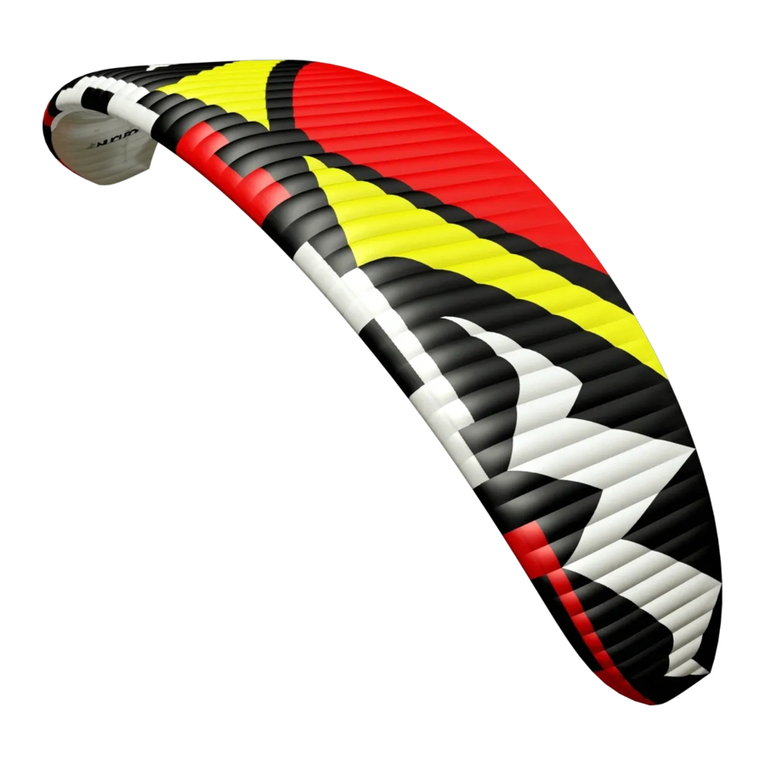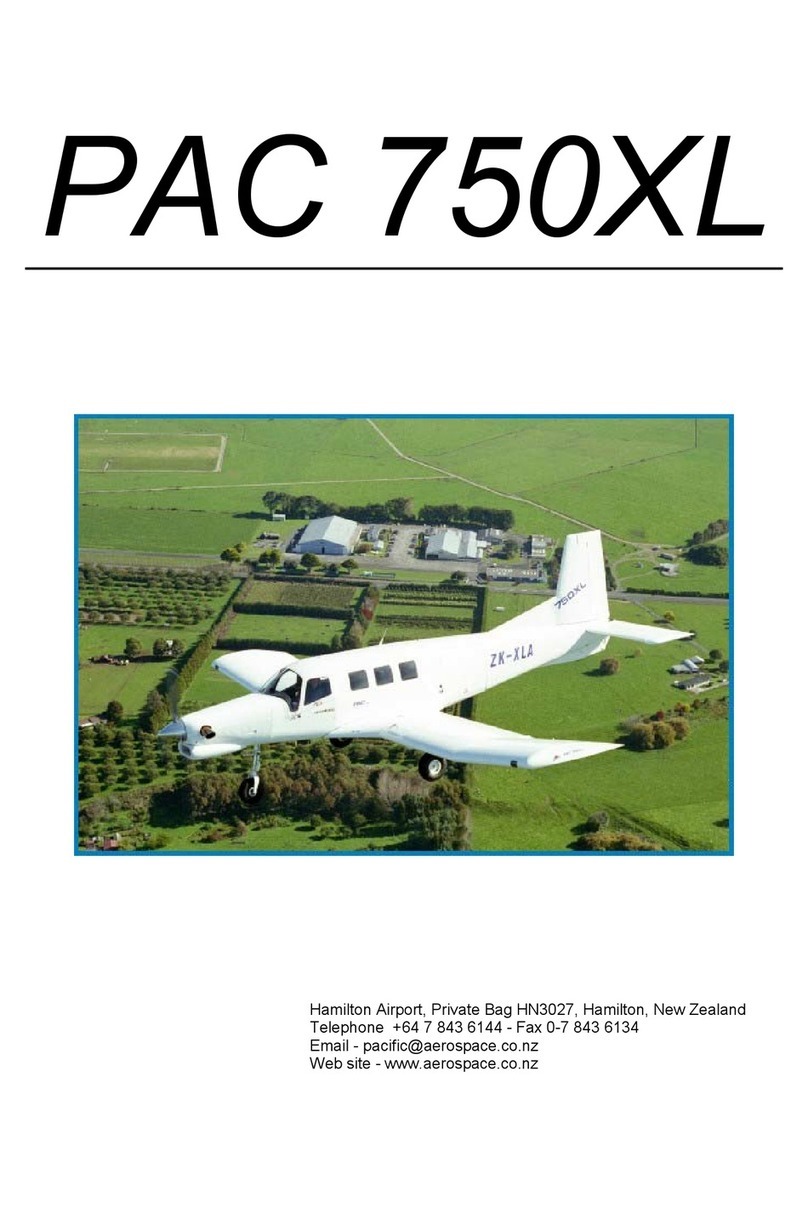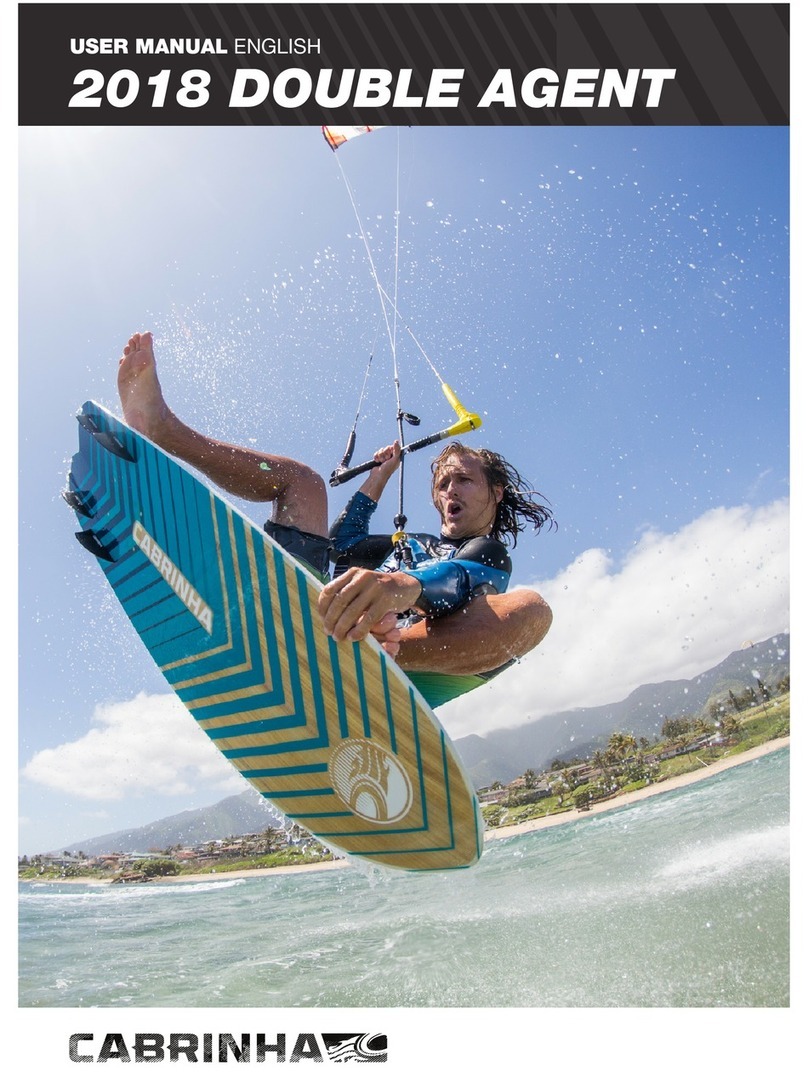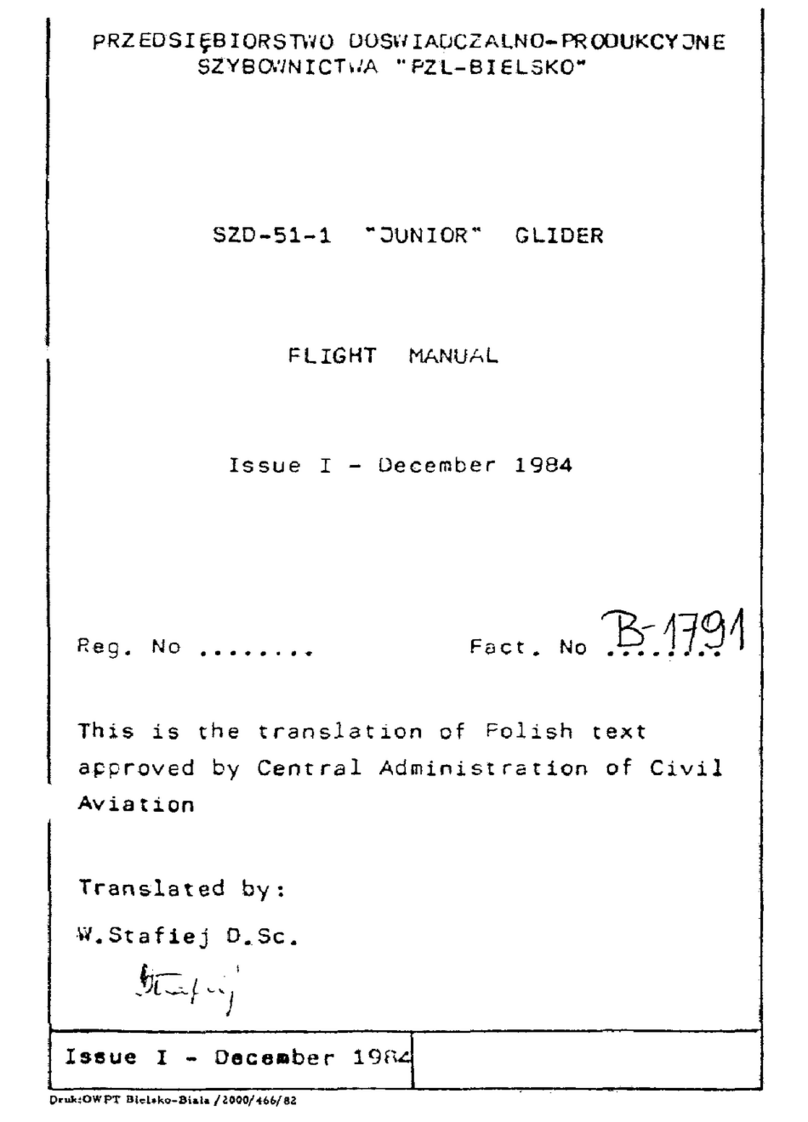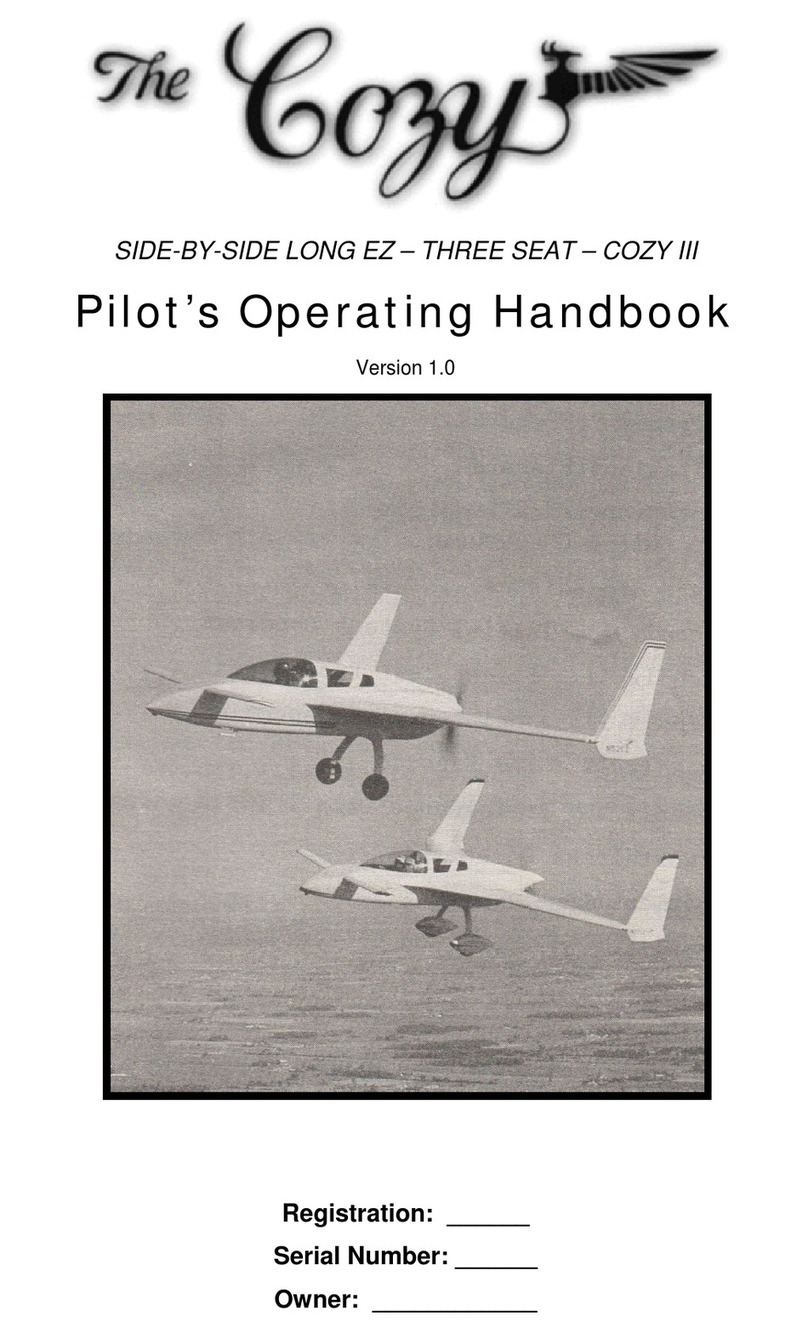
User manual / Handbuch / Navod k obsluze
Gii 4
4. CARING FOR
YOUR GII 4
4.1. Use
Gii 4 is made from high tech materials. However, care and
attention should be exercised when using to avoid abnormal
contact with abrasive surfaces. Carabiners require special
attention. If you have suspected any damage, replace them
immediately.
Pre-Flight Checks
PARAGLIDING IS AN EXTREMELY DEMANDING SPORT
REQUIRING THE HIGHEST LEVEL OF ATTENTION, JUDGMENT,
MATURITY, AND SELF-DISCIPLINE. EVEN SMALL DETAILS
SHOULD BE CAREFULLY CHECKED BEFORE FLYING.
• Check the carabiners, and make sure that the twist lock
system closes them automatically.
• Check the harness buckles and their functionality.
• Adjust the harness using a harness hanger or simulator.
When adjusting under the simulator you should familiarise
yourself with the harness and its parts. Test all adjustments,
study the position and use of the reserve handle.
• Check that the reserve handle and the pins are in the
correct position.
TAKE OFF
Before flying it is extremely important to adjust the harness so
that you can easily assume a sitting position when airborne.
1. Put the harness onto the shoulders.
2. Fasten the leg/chest buckles.
3. If necessary, adjust the shoulder straps (the shoulder strap
adjustment depends on the size of the pilot; not too tight as
some free movement is required so that you can run easily).
4. Check that the lumbar straps are adjusted so as to enable
the preferred position in flight.
5. Check that the chest strap is pre-adjusted correctly.
6. Ensure that the leg/chest strap buckles are fastened correctly
(closing the buckles incorrectly is a common cause of
accidents)
Landing
During the final approach, move from the sitting position to the
upright position. This should be done early enough to allow for
sudden loss of height on approach. There is a high risk of spinal
injury in the event of a seated landing. Under no circumstances
become complacent about being equipped with effective
protection.
SAFETY INFORMATION
Flying over water (SIV)
Do not use any kind of air based protection (Bumpair, Cygnus
type Airbag…) under any circumstances if there is a risk
of landing in water. If you land in water using a bumpair, it‘s
buoyancy behind the pilot creates a high risk of the pilot‘s head
being pushed under the water. During SIV or flights over water,
we recommend the use of a life jacket equipped with a collar
which will keep the pilot’s head above water in the event of loss
of consciousness.
Landing
Never land in a seated position, it can result in a serious injury,
the protection is not intended to replace landing gear.
4.2. Towing
Gii 4 is suitable for towing. The tow bridles should be attached
to the main carabiners. If you have any doubts ask a qualified
towing instructor.
4.3. Maintenance
Maintenance Advice
• The harness should be checked regularly for signs of wear
and damage.
• The carabiners should be replaced every 5 years.
• These carabiners should never be used for anything other
than paragliding (not for climbing etc.).
• All repairs should be carried out by the manufacturer or
by qualified persons who have been authorized by the
manufacturer, and always using the original materials
(thread, webbing, buckles).
• The zip fasteners should be lubricated from time to time,
using a silicone spray.
• The harness may be cleaned using mild soap and a soft
brush. If your harness gets wet, it is advisable to treat your
automatic buckles and carabineers with silicone grease.
This may also be done as a matter of course from time to
time.
12





















